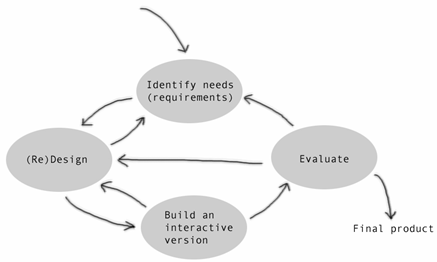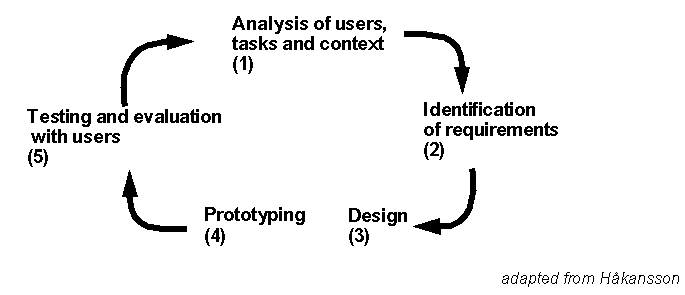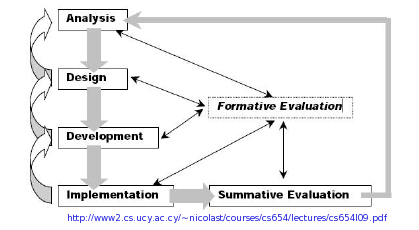Program design and implementation (CAS HEiE) - week 1: Difference between revisions
| Line 2: | Line 2: | ||
== Week 1 - Foundations of program design and implementation == | == Week 1 - Foundations of program design and implementation == | ||
* Interactive Class: Monday October 17: 17h00 - 19h15 | * Interactive Class: Monday October 17: 17h00 - 19h15 | ||
* Interactive Class: Wednesday October 17: 17h00 - 19h15 | * Interactive Class: Wednesday October 17: 17h00 - 19h15 | ||
| Line 33: | Line 34: | ||
'''Learner environments''' | '''Learner environments''' | ||
* Learning activities and assignments: Moodle UniGE | * Learning activities and assignments: Moodle UniGE | ||
* Moodle to learn moodle: https://arbores.tech/lms/ Please log in and change your password. | * Moodle to learn moodle: https://arbores.tech/lms/ Please log in and change your password. At some point, the instructor will display a file (module_3_participants.csv) with login + pwd information. | ||
* Various content platforms | * Arbores Tech Wiki (lecture notes, reading only): https://w.arbores.tech/ | ||
* Various other content platforms and online services | |||
'''Reading''' | '''Reading''' | ||
Revision as of 21:59, 16 October 2022
DKS:Program design and implementation (CAS HEiE)
Week 1 - Foundations of program design and implementation
- Interactive Class: Monday October 17: 17h00 - 19h15
- Interactive Class: Wednesday October 17: 17h00 - 19h15
- Public tutoring session: Friday October 21: 17h-19h
Learning goals
- Understand the structure and requirement of this module
- Recall general program design, quality assessment principles
- List steps of educational program design
- Use the ADDIE instructional design method in a user-centered interpretation
- Identify and discuss items in the revised ASPI program design check list,
- Add 1-2 missing items to ASPI check list that may be needed for emergency contexts.
Introduction to module 3
Presentation of the module organisation
- Learning goals
- Weekly organisation
Assignments, learner support and evaluation
- Learner support (public tutoring session, forum)
- Assignments - continuous work on the same document / peer commenting
- Final project
- Reuse of module 2 work is encouraged
- Learner assessment
- Grading rubics (can be negotiated)
- Group work (extra requirements)
Learner environments
- Learning activities and assignments: Moodle UniGE
- Moodle to learn moodle: https://arbores.tech/lms/ Please log in and change your password. At some point, the instructor will display a file (module_3_participants.csv) with login + pwd information.
- Arbores Tech Wiki (lecture notes, reading only): https://w.arbores.tech/
- Various other content platforms and online services
Reading
We will use two main textbooks, plus various extra materials of all sorts (academic, research, tech manuals, advice, ...). All reading is optional unless otherwise specified.
- Bates, A.W. (Tony) (2022). Teaching in a Digital Age: Third Edition, Vancouver, B.C.: Tony Bates Associates Ltd. Retrieved from https://pressbooks.bccampus.ca/teachinginadigitalagev3m/ You also can download this book in various formats, e.g. PDF, Print PDF, EPUB, HTMLBook. Make sure to get the official final version, since draft versions may have different page numbers.
- O’Neill, G. (2015). Curriculum Design in Higher Education: Theory to Practice. In University College Dublin. Teaching and Learning (Vol. 9, Issue 2). University College Dublin. Teaching and Learning. https://researchrepository.ucd.ie/handle/10197/7137
What is program design and implementation ?
Program design and implementation has several facets. A important distinction can be made between general design principles and methods and specific methods that can be applied to program and course design.
Intervening variables shape design explicitly or implicitly
Descriptive program implementation models
- General implementation models usually stress some kind of circularity.
Scope of implementation models differ. Some start from goal definition, others from problem definition, still others from the emergence of problem perception.
Applied Implementation and Evaluation studies
Depending on their scope and aims, implementation and evaluation studies do not lead to the same type of results. Restricted evaluation studies may show that promised outputs were done, that some outputs did happen, but not necessarily why. The also avoid looking at non-indented outcomes (whether positive or negative). Evaluation is discussed in the last course of this CAS.
How do we know if we pursue the right goals (or that we have goals) ?
Proscriptive models
Define how programs should be designed and implemented. We will lock a few principles of interest to educational program design.
- See also Project management below
Pretotyping
Pretotypes occupy the space between abstract ideas and prototypes. (Alberto Savoia, 2022 [1]). Often, programs are launched without really understanding what and if "it" is needed
According to Savoia (p. 12)
- The Right It is an idea for a new product that—if competently executed—will succeed in the market.
- The Wrong It is an idea for a new product that—even if competently executed—will fail in the market.
User-centered design
Participatory design

UCD cycle according to ISO
According to David Travis, in 13407 is dead. Long live ISO 9241-210! (June 2011, retrieved June 6 2011), ISO 9241-210 (formerly ISO 13407) defines 6 key principles for user centred design:
- The design is based upon an explicit understanding of users, tasks and environments.
- Users are involved throughout design and development.
- The design is driven and refined by user-centred evaluation.
- The process is iterative.
- The design addresses the whole user experience.
- The design team includes multidisciplinary skills and perspectives.
From the same author, free on-line texts about user-centered design and user experience:
- Usability Test Moderation: The Comic
- User-Centered Design: The Fable of the User-Centered Designer
- ISO 9241 for Beginners (see part 210, p.57).
Mutual understanding and grounding
- Mutual understanding among all stakeholders (including future teaching staff and learners) is crucial for the success of a project. Most often, participants in an educational project do not speak the other's "language" and therefore cannot collaborate efficiently. For example, a teacher does not understand an instructional designer, a program manager does not understand baisc ICT principles and terms, someone educated in the French system does not understand terms used by AngloSaxon counterparts (even if translated).
- Mutual grounding also refers to sharing of common beliefs that are carried by the project. Typically, visions and other strategic goals as well as relevant theory.
Context
Understanding cultural context
- How would you define intercultural competence ? and intercultural intelligence ?
Intercultural competence can be examined through the lens of cognitive, affective, and behavioral (CAB) dimensions. This paradigmatic approach focuses attention on such personal variables as tolerance of ambiguity, open-mindedness, and behavioral flexibility [3]
Leung, Ang & Tan [4] define intercultural effectiveness as being a result of intercultural competence. This component view of what intercultural effectiveness does not explain how it develops. Therefore, another approach is to look (inter)cultural competency in terms of developmental models as well as "intelligence". Cross et al. (1998 [5]), in the context of workplace diversity, laid the foundation of many further studies that have a behavioral and developmental orientation and that also have more practical aims: “Cultural competence is a a set of congruent behaviors, attitudes, and policies that come together in a system, agency, or among professionals and enables that system, agency, or those professionals to work effectively in cross-cultural situations.” Republished as Cross (2012) [6]
Accessibility of online classes and materials
Accès to machines, the Internet, bandwidth, network reliability offer constraints.
Other
- What are other specifics of the emergency context ?
- How does well-being affect learning ?
Innovation and change management
Suggested Reading:
- McCowan, et al (2022). Enablers of pedagogical change within universities: Evidence from Kenya, Ghana and Botswana. [7] This article address change management problems and strategies, i.e. difficulties of enactment. Quote: “There are certain crucial factors affecting [] implementation: the drivers of the initiative, and the extent to which it is embedded in the structures of the institution and championed by staff members; the presence of a pedagogical vision that is shared across an institution (or on a more modest scale the department or faculty); the necessary resources to implement it in practice, along with the work conditions and incentives required by lecturers; and finally, the opportunities and spaces for teaching staff to engage in reflection on their practice, and transform themselves and their teaching.”
The dynamics of innovation and change
Rogers' bell curve of adoption and Moore's chasm
Diffusion of innovation follows a kind of bell curve.
.... if the chasm can be crossed. Education probably follows a similar kind of pattern, but may require several attemps.
The J-Curve pattern
Innovation often has to go through a "J" Curve: After an introduction of an innovation, performance is lower. This must be anticipated.
Bates' Change Management Principles for e-learning
Bates (2000, 1-6) [8] formulates a few principles that change agents should know plus a few guidelines that an organization should adopt.
1. It's unlikely that new technologies will lead to reduction in spending because investment costs are high and recurrent. However, new technologies may increase pedagogical effectiveness and therefore be profitable. However this requires substantial reorganization of learning and teaching.
2. Technology must be integrated into a wider strategy for teaching and learning
3. “Lone ranger approaches” are useful to get started, but costly and inefficient in the long run.
4. Appropriate technology infrastructure is an essential requirement for technology-based teaching.
5. “Faculty members need much more support and encouragement than has been provided to date for their use of technology for teaching and learning” Effective teaching with technology requires a higher skill level.
6. “It is essential that institutions understand the costs of using new technologies.”
7. “Funding is probably the biggest lever for change.” Also, “reallocation is the ultimate test of an institution's commitment to teaching with technology.”
8. “Partnerships and collaboration are strategies for sharing the costs and leveraging the benefits of technology-based teaching.” And “An organizational structure encompassing a mix of centralized and decentralized strategies is recommended to support teaching with technology.”
9. “The implementation of these strategies will require fundamental change in the way our higher education institutions are organized and managed.”
10. Change can be a risk. Badly managed organizational projects can lead to disaster.
We can summarize Bates’ guidelines by putting forward the hypothesis that true change can only be achieved when the organization as a whole is ready to engage in the process.
Project management and quality approaches
- Goals, work packages, tasks and deliverables (traditional vs. flexible models)
- Quality assurance principles
- Pitfalls of Q/A
- Appreciative and flexible alternatives
Instructional program and course design principles
Educational Program Design
Follows a series of steps that start with a vision and end with a program down to module design. For example, O'Neill (2015) [9]defines six steps:
- Vision / Educational Philosophy
- Program goals and outcomes / Curriculum Models
- Product (learning outcomes) vs. Process (learning experience) models
- Program mapping and alignment
- General program aims, i.e. a small general set of broad competencies
- Program outcomes, i.e. knowledge, skills and attitudes that a typical student should acquire
- Program organisation and structure
- Scope of the program
- Simple to complex, conceptual to applied
- Integration of themes
- Provide formative and summative assessment
- Teaching, Learning and assessment strategies
- Intended outcomes, learning/teaching activities and assessment must be aligned ! (Biggs and Tang, 2007)
- Respect basic principles of instruction and learning
- Module Design (see ADDIE for example)
- Depending on the type of learning, teaching and learning strategies can be different but should align with general program aims.
Instructional Systems Designs (ADDIE)
Instructional systems design is popular for larger projects that include instructional designers.
- Analysis
- Design
- Development
- Implementation
There exist two interpretations: (1) A waterfall model and (2) A non-linear model

- Reading: Bates (2022, section 4.3) https://pressbooks.bccampus.ca/teachinginadigitalagev3m/chapter/6-5-the-addie-model/
Backwards Design
The model has 3 stages:
- Identify desired results (learning outcomes)
- “What should students know, understand, and be able to do? What is worthy of understanding? What enduring understandings are desired?”
- Determine Acceptable Evidence (means to assess if learners have learnt)
- “How will we know if students have achieved the desired results and met the standards? What will we accept as evidence of student understanding and proficiency?”
- Plan learning experiences and instruction. This includes:
- definition of knowledge (know-that), skills and procedures (know-how) students ought to master
- definition of materials
- definition of learning /teaching activities (scenarios).
Optional Reading: https://files.ascd.org/staticfiles/ascd/pdf/siteASCD/publications/UbD_WhitePaper0312.pdf
Revised ASPI check list
- Presentation and discussion of a to-do-check list (revised ASPI): “How do I analyse, guide, and sustain innovation in Higher Education?”, “What kind of information do I need at each stage of the innovation process to make decisions that serve my goals?”, “How do I process the data generated?”, and “How do I feed the results back into the process?”
Participants will fill in items of the checklist and make revisions during the whole length of the project.
Assignments
Week 1 mini project
Fill in points [.... ] of revised ASPI checklist as best as you can
- Define briefly a real or imaginary context. You may continue working on module 2 (B.Class) projects
- Identify a real or imaginary educational program, e.g. a certificate like this one
- Define major learning objectives in a paragraph. E.g. "Student should be able to .... <describe what the student will be able to do> .... or juste use verbs "<do .......>"
Inspiration (if needed)
- Connected Learning Consortium Yearbook 2021, booklet that lists some online teaching projects from a consortium)
- Padileia, Partnership for Digital Learning and Increased Access (PADILEIA) is an initiative under the Strategic Partnerships for Higher Education Innovation and Reform (SPHEIR).
- Strategic Partnerships for Higher Education Innovation and Reform. An example of a global partnership program.
Week 1 exchange
Discuss items of the ASPI checklist, for exemple:
- Are there missing slots in the ASPI checklist ?
- Are there items that you do not understand ?
- Numbered list item
Cited references
- ↑ Savoia, A. (2022). Pretotype It 10th Anniversary Edition - Pretotyping.org. Retrieved October 16, 2022, from https://www.pretotyping.org/pretotype-it-10th-anniversary-edition.html
- ↑ Preece Jenny, Yvonne Rogers and Helen Sharp (2002), Interaction Design, Wiley, ISBN: 0471492787
- ↑ Mitchell R. Hammer, The Developmental paradigm for intercultural competence research, International Journal of Intercultural Relations, Volume 48, September 2015, Pages 12-13, ISSN 0147-1767, http://dx.doi.org/10.1016/j.ijintrel.2015.03.004. (http://www.sciencedirect.com/science/article/pii/S0147176715000279)
- ↑ K. Leung, S. Ang, M.L. Tan, Intercultural competence, Annual Review of Organizational Psychology and Organizational Behavior, 1 (2014), pp. 489–519 http://dx.doi.org/10.1146/annurev-orgpsych-031413-091229
- ↑ Cross, T.L., Bazron, B.J., Dennis, K.W. & Isaacs, M.R. (1989). Towards a culturally competent system of care. Washington, DC: Georgetown University Child Development Center, CASSP Technical Assistance Center
- ↑ Cross, T. (2012). Cultural competence continuum. Journal of Child and Youth Care Work, 24, 83-85.
- ↑ McCowan, T., Omingo, M., Schendel, R., Adu-Yeboah, C., & Tabulawa, R. (2022). Enablers of pedagogical change within universities: Evidence from Kenya, Ghana and Botswana. International Journal of Educational Development, 90, 102558. https://doi.org/10.1016/J.IJEDUDEV.2022.102558
- ↑ Bates, A.W. (2000). Managing Technological Change: Strategies for College and University Leaders, San Franciso: Jossey-Bass.
- ↑ O’Neill, G. (2015). Curriculum Design in Higher Education: Theory to Practice. In University College Dublin. Teaching and Learning (Vol. 9, Issue 2). University College Dublin. Teaching and Learning. https://researchrepository.ucd.ie/handle/10197/7137






